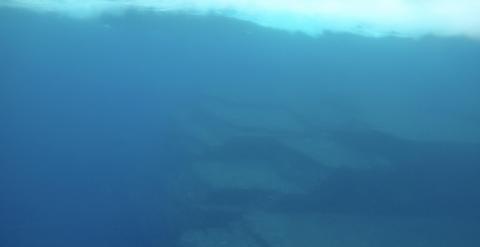Review: Something Else is Alive
The allure of Mechelle Bounpraseuth’s off-kilter ceramics initially drew me to Something Else is Alive: Sydney and the Animal Instinct at Customs House, along with my interest in anything animal related. In Bounpraseuth’s work Late Night Maccas Run With Bae (2017) an ibis, a pigeon and a seagull enjoy a bounty of McDonald’s fries, crinkle-cut chips and cigarette butts. The pigeon has managed to entangle itself in the crusts of a slice of bread in a comical and self-deprecating way. Bounpraseuth’s ceramic work often incorporates elements of pop culture with observations of our everyday lives.
Blak Douglas’ Hung Out to Fry (2017) references Wirambi or the Sydney fruit bat that can be seen flying around the city after dark. Bats, like pigeons, are often despised, seen as dirty or disease-ridden. It is a confronting experience to see one of these surprisingly large animals electrocuted—either still hanging to the powerlines or fallen onto the ground below. Inspired by the plight of the bats and their perilous life in the city, Douglas has cast two series of bats from resin and bronze, taking a bat he found electrocuted in Redfern as the model for the cast. One series of work is hand painted in red, yellow and black, with the other featuring gold and nickel plating. Through Douglas’ use of these materials he endeavours to elevate these nocturnal creatures that are an important totem of the Boorooberongal males (Darug Nation) in western Sydney. In the accompanying wall text, Douglas says of the electrocuted fruit bat he found: ‘I immediately saw an opportunity to cast and immortalise him in bronze, like the government did with famed colonials.’ Douglas’ work also directly references Lin Onus’ Fruit Bats (1991) held in the Art Gallery of NSW collection.
The exhibition includes a number of photographs by Garry Trinh whose documentary-style snapshots examine the everyday roles performed by animals and how interconnected our lives are with them. The series includes images of people dressed as animals or where animals have been anthropomorphised. I wonder when we will reach peak anthropomorphism on the internet—where animals currently seem to provide the perfect proxy through which to speak our own thoughts, feelings and humour.
The exhibition includes documentary footage and oral social histories. In particular, the footage of a Peregrine falcon devouring a pigeon on the windowsill of an office block is memorable. Captured by the office worker by whose desk this ferocious act occurred, the falcon first de-feathers the pigeon and then proceeds to eat it, returning over numerous days to pick the bones clean. The highest density of Peregrine falcons anywhere in the world is in New York City, closely followed by London. These birds, that previously inhabited deserted cliffs and were nearly extinct a century ago, have managed to reinvent themselves as urban predators.
The transitory and public nature of the Customs House foyer provides a refreshing space for this exhibition. On the day I visit the full breadth of the community is present, exemplifying that a city is inhabited by different people and animals at different times, operating on different schedules and occupying different temporal planes to one another. Caught up in the importance of our own lives we are unaware of entire groups of people or animals that we live closely with and are in some ways interdependent on.
Whether we have entered the Anthropocene epoch officially or not we are undeniably living in the age of the human being. Humans are driving the changes occurring in our environment and affecting evolution. Something Else is Alive illustrates this as we see wild animals adapting and creating new ways of going about their lives to survive in these new environments. By considering the symbiotic relationship between people and animals this exhibition reminds us of the importance of our inter-connections.


-itok=9pjEs1ZC.jpg)





_0-itok=xmccPKhn.jpg)

